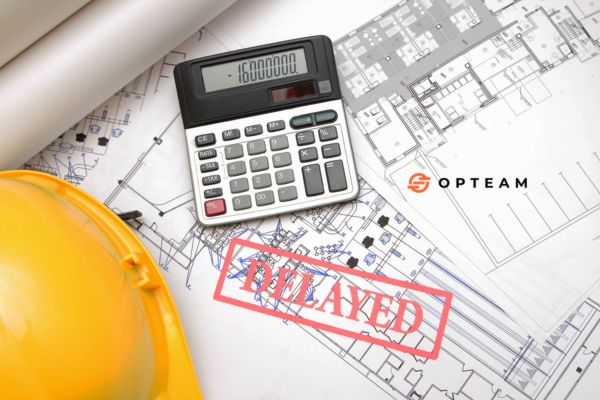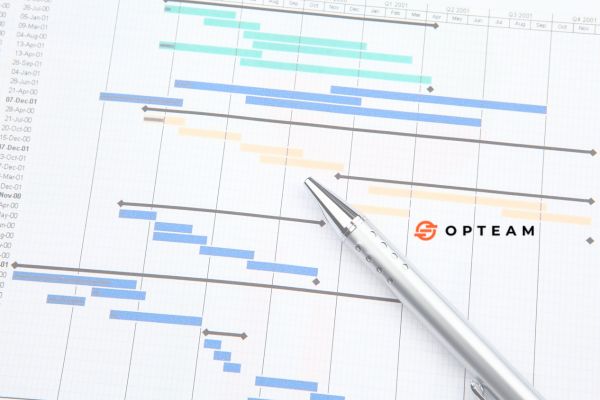Construction Delays Claims: A Comprehensive Guide

In short: A Construction Delay Claim is a formal assertion made by a party involved in a construction project, typically the contractor or subcontractor, seeking compensation or an extension of time due to delays that have impacted the project schedule. These claims arise when unforeseen events or circumstances cause delays, resulting in increased costs or time extensions beyond what was initially agreed upon in the contract. Construction Delay Claims are crucial because they address the financial and scheduling impacts of unforeseen events on a construction project. These claims allow contractors to seek compensation for additional costs incurred due to delays that are beyond their control, such as unexpected site conditions, severe weather, or changes in project scope by the owner. By formally documenting and asserting these claims, contractors can recover expenses related to extended overhead, labor, and equipment costs, thus mitigating the financial risks associated with project delays. Additionally, delay claims often provide the basis for requesting extensions to project deadlines, helping to protect contractors from penalties or liquidated damages for late project completion. Types of Construction Delays Claims Excusable vs. Inexcusable Delays Excusable delays are those that occur due to unforeseeable and uncontrollable events, entitling the contractor to a time extension and, in some cases, additional compensation. Here are some examples: On the other hand, inexcusable delays are caused by factors within the contractor’s control and do not entitle them to any relief or compensation. Here are some examples: Compensable vs. Non-compensable Delays Compensable delays are those for which the contractor is entitled to both a time extension and additional compensation. These delays typically occur due to actions or inactions by the project owner or other parties that affect the project’s timeline and cost. Examples of compensable delays include: Non-compensable delays are those for which the contractor is not entitled to additional compensation. These delays may still warrant a time extension but do not result in financial reimbursement. Examples of non-compensable delays include: Legal Implications of Delay Claims Contractor’s Legal Rights Contractors have the legal right to seek compensation and time extensions for delays that impact their ability to complete a project as initially agreed. These rights are often detailed in the construction contract, specifying the conditions under which delay claims can be made. Contractors can file claims for compensable delays caused by the owner’s actions or inactions, such as changes to project scope, late delivery of materials, or site access issues. Proper documentation and timely notification are essential for contractors to exercise these rights effectively and protect their interests. Owner’s Legal Rights Owners also have legal rights concerning construction delay claims, primarily focusing on ensuring the project is completed on time and within budget. They have the right to reject delay claims that lack sufficient documentation or are due to the contractor’s negligence or poor project management. Owners can also impose penalties or liquidated damages for non-excusable delays caused by the contractor. Moreover, owners may require detailed schedules and progress reports to monitor the project’s timeline and address potential delays proactively. Common Legal Disputes and Resolutions Common legal disputes in construction delay claims often revolve around the determination of responsibility for the delays, the adequacy of documentation, and the calculation of damages. Disputes may arise over whether a delay is excusable or compensable, the extent of the impact on the project schedule, and the resulting financial costs. These disputes can be resolved through various means such as negotiation, mediation, arbitration, or litigation. Effective communication, thorough documentation, and clear contract terms are crucial in minimizing disputes and facilitating fair resolutions. Strategies to Mitigate Construction Delays Implementing Critical Path Method (CPM) Scheduling Implementing Critical Path Method (CPM) scheduling is a crucial strategy for mitigating construction delays. CPM involves mapping out all project activities, identifying the longest sequence of critical tasks that must be completed on time for the project to finish by its deadline. By focusing on these critical tasks, project managers can allocate resources more effectively, monitor progress closely, and identify potential bottlenecks early. CPM helps in predicting delays and allows for proactive adjustments to keep the project on track. Effective Communication and Coordination Effective communication and coordination among all stakeholders are vital to prevent construction delays. Establishing clear lines of communication ensures that all parties are aware of project updates, changes, and potential issues. Regular meetings, progress reports, and collaborative tools facilitate transparency and timely information sharing. When all team members, from contractors to subcontractors to owners, are well-informed and working together seamlessly, it reduces misunderstandings and delays caused by miscommunication. Risk Management Techniques Risk management techniques are essential in identifying, assessing, and mitigating potential risks that could lead to construction delays. This involves conducting thorough risk assessments at the project’s outset to anticipate challenges and develop contingency plans. Regular monitoring and updating of the risk management plan allow for quick responses to emerging issues. Techniques such as risk transfer, avoidance, and mitigation strategies help minimize the impact of unforeseen events, ensuring that delays are managed effectively. How Opteam.ai Can Help Opteam.ai, an AI-powered construction planning and scheduling software, can significantly aid in mitigating construction delays. The software leverages advanced algorithms and machine learning to optimize project schedules, predict potential delays, and recommend corrective actions. With features like real-time data analysis, automated schedule updates, and intelligent resource allocation, Opteam.ai enhances project efficiency and accuracy. By providing detailed insights and proactive solutions, it helps project managers stay ahead of potential issues and maintain project timelines. Conclusion Construction delay claims are a critical aspect of managing construction projects, helping to address the financial and scheduling impacts of unforeseen events. Differentiating between excusable and inexcusable delays, as well as compensable and non-compensable delays, is essential for both contractors and owners to understand their rights and obligations. Effective strategies to mitigate construction delays include implementing Critical Path Method (CPM) scheduling, fostering effective communication and coordination, and employing robust risk management techniques. Additionally, leveraging advanced tools like Opteam.ai can provide significant advantages in planning, scheduling, and proactive delay management. Future trends in
Schedule Performance Index Calculator

The Schedule Performance Index (SPI) is a key performance indicator in project management, used to measure the efficiency of time utilization on a project. It is calculated by dividing the Earned Value (EV) by the Planned Value (PV). SPI helps project managers understand whether a project is ahead of or behind schedule. Schedule Performance Index (SPI) Calculator Earned Value (EV): Planned Value (PV): Calculate SPI Understanding the Schedule Performance Index (SPI) The Schedule Performance Index (SPI) is a key metric used in project management to evaluate how efficiently time is being utilized on a project. By comparing the Earned Value (EV), which represents the value of work actually performed, to the Planned Value (PV), which represents the value of work planned to be performed, SPI provides a quantitative measure of schedule efficiency. This index is essential for project managers to gauge whether their project is on track with the planned timeline. An SPI value of 1 indicates that the project is progressing exactly as scheduled, while an SPI value less than 1 signifies that the project is behind schedule, and a value greater than 1 suggests that the project is ahead of schedule. Effective time management is crucial for the success of any project, making SPI a vital tool in the project manager’s toolkit. Regularly monitoring the SPI allows project managers to identify potential delays early and implement corrective actions to bring the project back on track. Additionally, it helps in making informed decisions about resource allocation, scheduling adjustments, and other strategic changes needed to ensure timely project completion. Overall, the SPI fosters better control and transparency, enabling project managers and stakeholders to achieve project goals within the stipulated timeframe. Components of the SPI Formula SPI Formula SPI = EV / PV Interpretation of SPI Importance of SPI in Project Management Example Calculation Suppose a project has an Earned Value (EV) of $600,000 and a Planned Value (PV) of $700,000: SPI= 600,000 / 700,000 SPI=0.86 This indicates that the project is behind schedule, as the SPI is less than 1. Read more:
TCPI Formula in Construction Project Management

The To-Complete Performance Index (TCPI) is a critical metric in construction project management, used to determine the efficiency needed to complete a project within the remaining budget. By comparing the work left to be done to the remaining budget, TCPI helps project managers understand the required performance to achieve financial targets. To-Complete Performance Index (TCPI) Calculator Budget at Completion (BAC): Earned Value (EV): Actual Cost (AC): Calculate TCPI What is To-Complete Performance Index (TCPI) in Construction? The To-Complete Performance Index (TCPI) is a key performance indicator in construction project management that measures the cost efficiency required to complete a project within the remaining budget. It is calculated by dividing the difference between the Budget at Completion (BAC) and Earned Value (EV) by the difference between BAC and Actual Cost (AC). Understanding the Components of TCPI Formula Interpretation of TCPI: Importance in Construction: Example Calculation: Suppose a construction project has a Budget at Completion (BAC) of $1,000,000, an Earned Value (EV) of $600,000, and an Actual Cost (AC) of $700,000: TCPI Formula = 1,000,000−600,000 / 1,000,000−700,000 TCPI = 1.33 This indicates that to complete the project within the remaining budget, the cost efficiency needs to be 1.33, reflecting the need for increased efficiency in spending. Read more:
Maximize Efficiency with Lean Construction Scheduling

Effective scheduling is the backbone of successful construction projects, ensuring everything runs smoothly from start to finish. However, traditional scheduling methods often lead to inefficiencies, delays, and unnecessary costs. A recent study showed that Nine out of ten projects experience cost overrun. Enter Lean Construction Scheduling—an innovative approach designed to revolutionize how construction projects are managed. By focusing on reducing waste and enhancing value, Lean Construction Scheduling empowers teams to take ownership of their tasks, fostering a more efficient and collaborative work environment. Discover the transformative benefits of this methodology and learn how it can drive your construction projects to new heights of success. What is Lean Construction Scheduling? It is an advanced project management methodology that applies Lean principles to the scheduling and execution of construction projects. It aims to enhance efficiency, reduce waste, and maximize value by involving all stakeholders in the planning process and continuously improving workflows. Core Principles: Comparison: Traditional vs. Lean Scheduling Aspect Traditional Scheduling Lean Construction Scheduling Planning Approach Top-down; managers create and dictate the schedule. Collaborative; involves task executors and stakeholders, ensuring realistic and buy-in. Flexibility Rigid; difficult to adapt to changes, leading to delays and increased costs. Flexible; allows adjustments based on real-time data and project conditions, minimizing delays. Value Focus Task completion-oriented, often disregarding efficiency or value. Value-driven; focuses on minimizing waste and improving processes to deliver maximum value. Review Approach Periodic reviews at milestones or issue points. Continuous monitoring and improvement; adjustments made promptly to keep the project on track. Responsibility Model Fixed responsibilities; managers oversee and direct task executors. Shared ownership; task executors involved in planning and accountable for commitments, fostering higher engagement and performance. Benefits of Lean Scheduling Minimizing waste Lean Construction Scheduling excels in minimizing waste throughout the construction process. By integrating Lean principles, such as Just-In-Time delivery and Value Stream Mapping, this approach identifies and eliminates various forms of waste, including time, materials, and resources. By streamlining workflows and optimizing processes, Lean Construction Scheduling ensures that resources are utilized efficiently, reducing costs and enhancing project profitability. Enhancing efficiency and flexibility One of the key advantages of Lean Construction Scheduling is its ability to enhance efficiency and flexibility in project execution. By promoting collaborative planning and involving all stakeholders in the scheduling process, Lean Construction Scheduling ensures that schedules are realistic, achievable, and adaptable to changing project conditions. This flexibility allows teams to respond quickly to unforeseen challenges or opportunities, mitigating risks and minimizing disruptions. A study showed that projects that follow lean construction principles are three times more likely to complete ahead of schedule and two times more likely to complete under budget. Improving communication and coordination Lean Construction Scheduling fosters improved communication and coordination among project stakeholders. By involving task executors in the planning process, this approach ensures that everyone has a clear understanding of project goals, timelines, and expectations. Collaborative planning sessions facilitate open dialogue and the exchange of ideas, allowing teams to address potential issues proactively and find solutions collectively. Additionally, Lean Construction Scheduling promotes transparency and accountability, as all stakeholders are engaged in the decision-making process. This leads to better alignment of objectives and priorities, reducing misunderstandings and conflicts. Continuous monitoring and adjustment A hallmark of Lean Construction Scheduling is its emphasis on continuous monitoring and adjustment throughout the project lifecycle. Rather than relying on static schedules, Lean principles encourage teams to regularly review progress and performance, allowing for timely interventions and course corrections. By monitoring key metrics and milestones, project managers can identify potential risks or delays early on and take proactive measures to mitigate them. This proactive approach minimizes the likelihood of costly setbacks and ensures that projects stay on track. Moreover, continuous monitoring enables teams to learn from their experiences and make data-driven decisions for future projects. Common Challenges and How to Overcome Them Potential obstacles in adopting Lean Scheduling Lean Construction Scheduling fosters improved communication and coordination among project stakeholders. By involving task executors in the planning process, this approach ensures that everyone has a clear understanding of project goals, timelines, and expectations. Collaborative planning sessions facilitate open dialogue and the exchange of ideas, allowing teams to address potential issues proactively and find solutions collectively. Additionally, Lean Construction Scheduling promotes transparency and accountability, as all stakeholders are engaged in the decision-making process. This leads to better alignment of objectives and priorities, reducing misunderstandings and conflicts. Ultimately, improved communication and coordination contribute to smoother project execution and enhanced teamwork, resulting in higher-quality outcomes. Practical Implementation of Lean Construction Scheduling Steps to Implement Lean Scheduling in Construction Projects Implementing Lean Scheduling in construction projects involves several key steps to ensure successful adoption and integration. Firstly, it’s essential to establish clear communication channels and buy-in from all project stakeholders, including project managers, task executors, subcontractors, and suppliers. This involves conducting training sessions and workshops to familiarize teams with Lean principles and the benefits of Lean Scheduling. Next, collaborative planning sessions should be organized to develop a detailed project schedule that reflects the input and expertise of all team members. During these sessions, emphasis should be placed on identifying and addressing potential waste and inefficiencies to optimize project workflows. Tools and Software for Effective Scheduling In the modern construction industry, leveraging tools and software can greatly enhance the effectiveness of Lean Scheduling. There are various project management software solutions available that offer features specifically designed for construction scheduling, such as Gantt charts, task dependencies, and resource allocation. Popular options include Procore, Primavera P6, and Microsoft Project. Additionally, Lean Scheduling can be complemented by Lean management tools such as Kanban boards, 5S methodology, and Value Stream Mapping software. These tools help visualize workflows, track progress, and identify areas for improvement, enabling teams to streamline processes and maximize efficiency. By integrating these tools into their workflows, construction teams can effectively implement Lean Scheduling principles and drive success in their projects. Conclusion In summary, Lean Construction Scheduling offers a multitude of benefits that are crucial for the success of construction projects. By minimizing waste,
Construction Cost Performance Index Calculator

Advanced Construction CPI Calculator Earned Value (EV): Budgeted cost of work performed Earned Value (EV): Actual Cost (AC): Actual cost of work performed Actual Cost (AC): Labor Efficiency Factor (optional): Used to refine CPI interpretation Labor Efficiency Factor: Project Phase: Helps contextualize the CPI Project Phase: — Select Phase —DesignProcurementFoundationStructureFinishing Add Phase & Calculate 📊 CPI Benchmarks by Phase Phase Target CPI Range Design 0.95 – 1.10 Procurement 0.90 – 1.05 Foundation 0.85 – 1.00 Structure 0.90 – 1.05 Finishing 0.95 – 1.10 What is Cost Performance Index in construction? The Cost Performance Index (CPI) is a key performance indicator in construction project management that measures the cost efficiency and financial performance of a project. It is calculated by dividing the Earned Value (EV) by the Actual Cost (AC). Understanding the Components: Interpretation of CPI: Importance in Construction: Example Calculation: Suppose a construction project has an Earned Value (EV) of $500,000 and an Actual Cost (AC) of $450,000: CPI=500,000/450,000≈1.11 This indicates that for every dollar spent, the project is earning $1.11 worth of work, reflecting good cost efficiency and that the project is under budget. More from Opteam: Construction Cost Variance Calculator
What is Concurrent Delay in Construction?

On average, 72% of construction projects experience delays, with the original contracted duration increasing by 38%. Among these delays, concurrent delays present a particularly complex challenge. They disrupt the scheduled flow of construction projects, lowering the expected profits, and often leading to complicated processes involving construction litigation. Knowing this is vital for those handling disputes and trying to keep a project on track. Documenting Delay Events In construction projects, delays do not only happen due to events by one party (i.e., owner or contractor) but also concurrently due to events by both parties. Concurrent delays occur when multiple setbacks happen simultaneously. These concurrent delays make it difficult to analyze the allocation for delay responsibility and the consequent liability, compensation, and project extension decisions. Look at the demonstration example below of a small 8-day plan that experienced execution delay events by both parties at different times to different activities, as shown. Read more: Construction Progress Tracking: Why, What & How? The result is a 3-day project delay, as shown in Fig. 1. Even for this tiny, simplified example, it is not easy to determine the portion of the 3-day project delay is attributed to each party (owner and contractor). This demonstrates the importance of properly documenting all progress events accurately and timely on the day they occurred, along with recording the related reasons and any support documents such as communication letters, photos, etc. In any construction project, there can be many reasons for each party to cause work delay event. A summary of some key reasons is shown in Fig. 2. Typically, owner-related causes justify time extension and money compensation to the contractor. Contractor causes, on the other hand, are neither compensable nor entitles the contractor to time extension. When a third party-related event (extreme weather, strike, or other unexpected events) occurs, it usually entitles the contractor to time extension but not monetary compensation. Also, when it is proven that concurrent events simultaneously caused a project delay, shared allocation can be determined. These, however, are general rules and complex situations may require some negotiations to resolve any disputes. A brief discussion of top ten causes is as follows: Owner related causes: Contractor related causes: Read more: What Is Fast-Tracking in Construction? All What You Need to Know Third-party related causes: Analysis and Resolution: How Opteam can help? Analyzing project delays requires a systematic approach to identify the root causes and the sequence of events leading to the delays. The accuracy of the analysis depends on the accuracy by which progress events are recorded, including daily reports, meeting minutes, and correspondences. A critical aspect of resolving disputes is effective communication among all stakeholders. Open lines of communication can help in identifying potential delays early and addressing them before they escalate. Establishing a protocol for documenting and reporting delays ensures that all parties are aware of the issues as they arise. This transparency not only aids in the timely resolution of delays but also fosters a collaborative environment where stakeholders can work together to find solutions. Utilizing Opteam’s add-on software enhances the accuracy of both progress recording and delay analysis. Upon recording the delay events on the school, Opteam’s analysis tools accurately assess both delays and accelerations in cases of two-party events, three-party events, and multiple baseline updates. This allows for a clearer visualization of activities and impacts. Opteam’s analysis methods are discussed in a separate article. However, the main concept is to apply Venn analytics to determine the delay responsibility, as shown in Fig. 3. Concurrent Delay Analysis Methods Concurrent delay analysis can be a bit tricky, but let’s keep it super simple. Imagine two kids running a race, and both stop at the same time because one trips over a rock and the other stops to tie their shoe. Who’s to blame for the delay? That’s what concurrent delay analysis is all about—figuring out how to split the responsibility when more than one thing causes a project to slow down. Here are the basic methods to understand it: In short, it’s all about spotting what caused the slowdowns and figuring out who’s responsible for what. Easy, right? 😄 Concurrent Delay Construction Example Alright, let’s break it down with an example that’s easy to picture: The Scenario: You’re building a house. The contractor was supposed to install the roof, and the homeowner was supposed to finalize the window designs by a certain date. What Happened: The Impact: Both delays happened during the same 2-week period, and they pushed the project timeline back. This is concurrent delay—when two delays overlap and cause issues. Who’s Responsible? This is why analyzing concurrent delays is such a big deal in construction projects—it’s about fairness! 😊 Conclusion Your skill in analyzing complex delay situations is key to keeping projects on track. It also helps avoid complex legal disputes that can emerge. Detailed progress documentation and delay analysis tools such as Opteam’s add-on software are essential to carefully map out the intertwined schedules and legal issues in construction contracts. The impact of concurrent delays on construction litigation is significant. Legal considerations play a significant role in the resolution of delays. It is essential to have a clear understanding of the contract terms related to delays and extensions of time. Consulting with legal experts who specialize in construction law can provide valuable insights into liability and help in drafting contract provisions that address potential delays. Additionally, investing in training for project managers and staff on best practices for delay analysis and resolution can improve their ability to manage and mitigate delays effectively, ultimately keeping projects on track.
Construction Cost Variance Calculator

Managing the financial aspects of a construction project can be a complex and challenging task, particularly when it comes to tracking and controlling costs. A Construction Cost Variance Calculator is an essential tool designed to help project managers, contractors, and financial planners monitor their budget in real-time, ensuring that projects stay on track financially. By comparing the planned budget against actual expenditures, this calculator highlights discrepancies, providing valuable insights into cost overruns or savings. It serves as an early warning system, allowing for timely adjustments and informed decision-making to mitigate financial risks. The importance of a Construction Cost Variance Calculator cannot be overstated in an industry where unexpected expenses and changes are common. This tool not only helps in maintaining financial discipline but also enhances transparency and accountability throughout the project lifecycle. It supports better resource allocation, improves efficiency, and ultimately contributes to the successful completion of construction projects within the desired budget and timeframe. Cost Variance Calculator Earned Value (EV): Actual Cost (AC): Calculate CV What is Construction Cost Variance? Construction Cost Variance (CV) is a financial metric used to measure the difference between the budgeted cost and the actual cost of a construction project. It indicates whether a project is over or under budget. A positive CV means the project is under budget, while a negative CV indicates it is over budget. Understanding and managing CV helps in controlling costs and ensuring financial efficiency throughout the construction process. Why is it important? Calculating the cost variance in construction projects is pivotal for maintaining financial stability and project success. Firstly, it provides real-time insights into the project’s financial health by comparing the budgeted costs with the actual expenditures. This allows project managers to identify discrepancies early on, enabling them to take proactive measures to mitigate any potential budget overruns or cost deviations. Additionally, understanding the cost variance ensures better financial planning and resource allocation, helping to optimize budget utilization and prevent financial strain on the project. Moreover, calculating the cost variance fosters accountability and transparency within the construction process. It enables stakeholders to assess the effectiveness of their financial strategies and decision-making, leading to improved efficiency and cost-effectiveness in future projects. By closely monitoring the cost variance, construction teams can make informed adjustments, anticipate financial risks, and ultimately ensure the successful completion of projects within the allocated budget constraints. What is Earned value (EV)? Earned Value (EV) is a project management metric that measures the value of work actually performed up to a specific point in time. It provides a quantifiable way to assess project performance and progress by comparing the planned work and budgeted cost with the actual work completed. EV is a key component of the Earned Value Management (EVM) system, which helps project managers identify variances in cost and schedule performance early, enabling timely corrective actions to keep the project on track. What is actual cost? Actual Cost (AC), also known as Actual Cost of Work Performed (ACWP), is a project management metric that represents the total expenditure incurred for the work completed on a project up to a specific point in time. This includes all direct and indirect costs such as labor, materials, equipment, and overheads. AC is a critical component of the Earned Value Management (EVM) system, providing insight into how much has been spent compared to what was planned, thus helping project managers track financial performance and manage budgets effectively.
Construction Cost Management: 20 Tips For Maximum Profitability

In the construction industry, inefficiencies can be drainful, and many projects suffer cost overruns or get delayed, with only 8.5% of projects completed on time and on budget (source). Cost tracking acts as a vital tool for companies’ profitability. Furthermore, the accuracy and diligence in construction cost management are essential. Accurate cost tracking is the backbone of maximizing profitability, optimizing resources, and leading your project to victorious completion. Construction Cost Management: Why Is It Important? In construction, cost tracking allows managers to monitor expenses in real-time. By meticulously tracking costs associated with materials, labor, and equipment, construction companies can identify discrepancies between projected and actual expenditures. This real-time insight enables quick adjustments to be made, preventing small issues from escalating into major financial overruns. Effective cost tracking ensures that funds are directed towards the most critical aspects of the project, thus enhancing overall profitability. Additionally, with detailed cost data, construction managers can develop more precise budget for future projects, reducing the likelihood of unexpected expenses and delays. This proactive approach to financial management helps in negotiating better deals with suppliers and subcontractors, securing more favorable terms and prices. Challenges in Construction Cost Management Several challenges can cause inefficiencies in managing the cost of construction. They can be of two types: Challenges in accurately and practically estimate the budget of the work, before construction starts; and challenges in controlling the actual expenditures to avoid exceeding the budget, after construction starts. Below are some of the detailed challenges. Before Construction 1- Budget Overruns: Projects often exceed their initial budgets due to unforeseen costs, leading to financial strain. 2- Inaccurate Estimates: Not only the activities’ direct costs need to be accurately estimated based on practical productivity factors, but all indirect costs as well. 3- Omissions & Errors: The increasing complexity of modern projects makes errors and omissions very common in the preparation of estimates. 4- Insufficient time: The competitive bidding process can leave limited time for the preparation of detailed estimates. During Construction 1- Unexpected Site Conditions: Unanticipated conditions on-site can lead to additional costs for mitigation and adjustments. 2- Changes: Modifications to project scope can lead to significant cost increases and require budget adjustments. 3- Complex Supply Chains: Managing and coordinating multiple suppliers and subcontractors can result in cost variability. 4- Labor Cost Fluctuations: Variations in labor rates and availability can impact overall project costs. 5- Material Price Volatility: Fluctuating prices of construction materials can affect actual project costs. 6- Inefficient Cost Tracking Systems: Lack of real-time cost tracking tools can hinder timely decision-making and cost control. 20 Tips For Efficient Construction Cost Management Here are several tips to enhance cost management in construction, both before and during construction, as shown in the details below: Before Construction During Construction Mastering Management with Opteam From detailed scheduling to automated real-time updates, Opteam empowers you to stay on track and meet deadlines with ease. It’s a new software solution that integrates advanced planning capabilities with user-friendly progress tracking, making cost and time management simpler and more effective. Opteam isn’t just about scheduling and budgeting; it’s about fostering collaboration and communication across your entire project team. The platform ensures that everyone, from project managers to on-site workers, has access to the latest updates and information. With mobile-friendly features, team members can update progress and communicate changes in real-time, no matter where they are. This connectivity ensures that everyone is on the same page, reducing delays and preventing miscommunication. Conclusion In the complex world of construction, cost management stands out for ensuring projects are efficient. This crucial practice is the foundation for guiding projects to profitability. As the construction sector grows, refining cost management becomes key to staying competitive. The adoption of cost management tools can streamline construction workflows, making it easier to manage cost volatility. The journey of enhancing productivity with construction cost management is ongoing. Your commitment to enhancing team communication and cooperation is vital. It’s through adapting and applying innovative solutions that your projects will achieve their goals. This adaptation is crucial for not just survival but for flourishing in tomorrow’s competitive construction field.